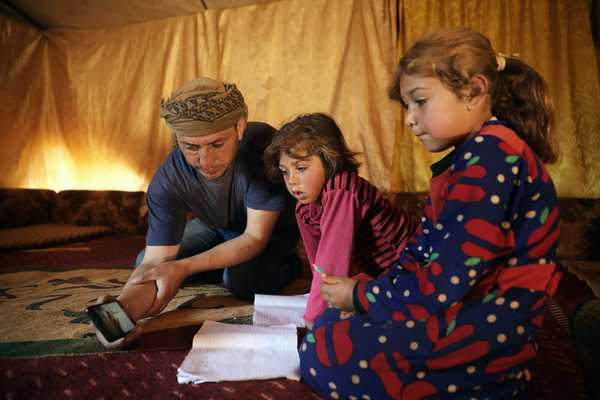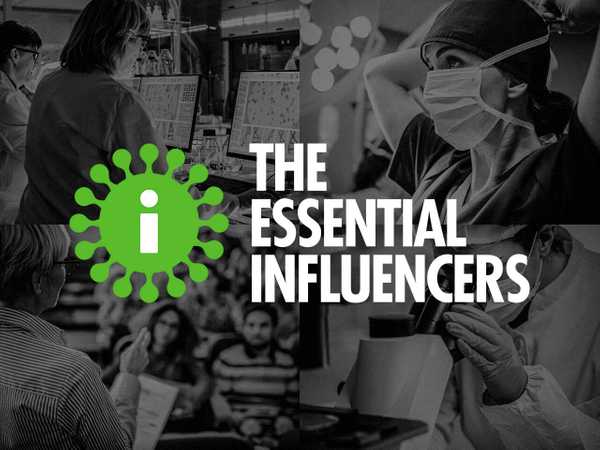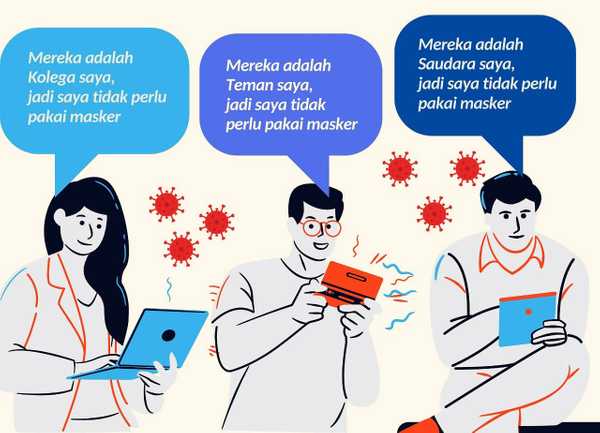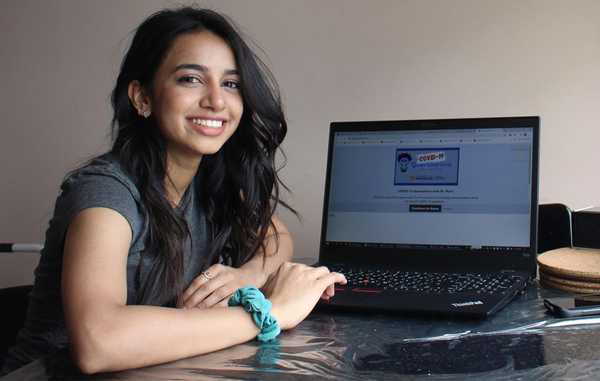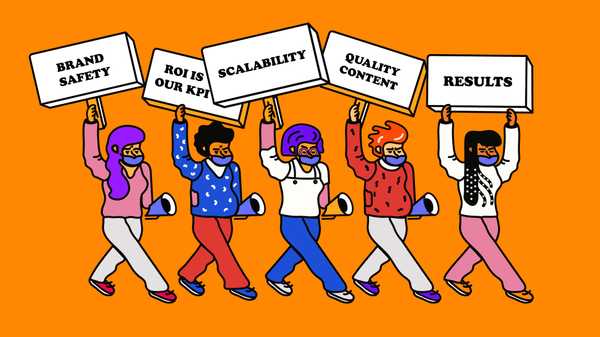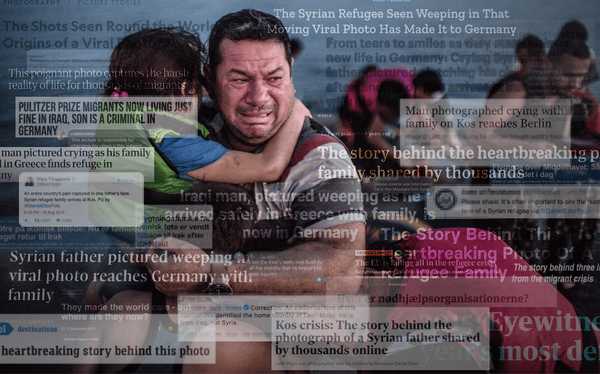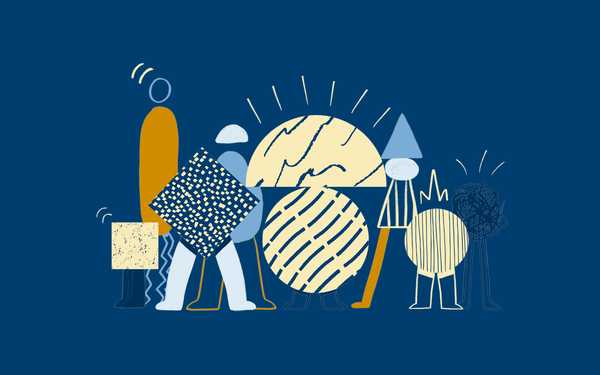What is
 ?
?
A brand-new, monthly briefing to help you navigate this wild New Normal. We’ll be covering the trends no brand can afford to ignore...but that’s not all. Every issue includes exercises and prompts to get your team innovating: Making shifts & making sh*t happen!
A global crisis drafting every brand – yours included.
As they’re fighting off the virus, fighting inequality, fighting to maintain their livelihoods...consumers globally are trying to arm themselves with knowledge. The facts! Yet bias and misinformation are muddling what should be clear. Consumers are anxiously analyzing each bit of news for themselves: What’s fact? What’s fake? What’s operating in a murky, middle ground? What does this mean for me? Consumers expect all brands – not just in media – to take action. There are two key opportunities: You can help them spot what’s questionable and read between the tweets. Your firm can additionally offer an indispensable consumer resource, full of facts they can trust...which, in turn, will boost trust in your own brand.
Thanks to the *big events* of the past year – you know what they are! – consumers’ eyes are glued to the news.
News consumption is on the rise: 67% of people surveyed in 13 countries reported consuming more news coverage as a result of the pandemic.
We know, the “fake news” phenomenon isn’t exactly news in 2020. But consumers’ ramped- up search for news prompted a misinformation avalanche, what the World Health Organization (WHO) calls an ‘infodemic’. Some of the most dangerous falsities have been advanced by QAnon, a conspiracy theory movement where fake news, hate speech and paranoia collide.
Popular narratives feature toxic COVID ‘cures’; Trump’s supposed war on a left-wing, satanic pedophile ring; and the idea (lie) that furniture retailer Wayfair trafficked children via product listings.
Yes, people believe this stuff. Increasingly so. QAnon groups collectively grew 34% – to over 4 million followers worldwide – between June and August.
Of course, this issue extends beyond a single fishy source. It’s spread out like a spiderweb, each strand uniquely shaped by its location. Right now, The Fight for Facts is a world war...with local authorities often making matters worse. Just a few global snapshots:
In Indonesia, with up to 70% flouting social distancing rules, the agriculture minister touted an eucalyptus necklace ‘cure’.
The story in Brazil isn’t just one of flat-out falsities. It’s also about framing and omission.
The Health Ministry’s “Scoreboard of Life” tracked total COVID recoveries and cases/deaths reported during the past 24 hours...not total deaths. The Supreme Court ordered the government to quit hiding that the country has the world’s second-highest COVID death rate.
Meanwhile, in the US, President Trump retweeted a video hailing hydroxychloroquine
(try saying that five times fast!) and dissuading viewers from wearing masks...which garnered 16 million views before being removed.
And (no) thanks to other viral videos like “Plandemic”, a 26-minute piece viewed 8 million times, nearly 3 in 10 Americans believe COVID was developed in a lab – with 23% believing it was formulated intentionally.
We can’t discuss The Fight for Facts without including the battleground: the social platforms. Consumers, fact- focused governments and brands alike are leading a Tech Inquisition, ordering social giants to take on misinformation. And so they have – although how successful these measures are isn’t clear.
Facebook said its AI removed 134% more hate speech posts in Q2 than Q1 and 7 million false COVID posts...yet Facebook is still being slammed for its questionable judgment calls and overall lack of progress.
WhatsApp created a fact-checking tool that lets users research frequently-forwarded messages on Google.
Twitter pulled up the curtain shrouding political misinformation campaigns – it began clearly labelling government official and state- affiliated media accounts.
Other brands – beyond Big Tech or media – are additionally inspired to take action. Why?
First of all, they know consumers are worried right now. 56% of them across 40 countries are concerned about what is or isn’t real online; 40% are particularly about politicians misleading the public.
Meanwhile, brands are worrying about ads. Google’s ad tools are placing big brands’ campaigns on conspiracy sites (not a good look) and funneling at least USD 25 million to these outlets.
Where others mislead, your brand can lead. Step up to sound the alarm on falsehoods and shine your spotlight on the facts. Your customers will thank you.
See how brands around the globe and across sectors are taking action in The Fight for Facts. Let them inspire your contribution to the movement — even, perhaps, your organization’s larger purpose-beyond-profits — and keep reading to jumpstart your team brainstorm!
1.
SOUFAN CENTER & TRUEPIC
MIDDLE EAST
Alliance verifies stories from COVID- impacted conflict zones
Could you combine local knowledge with digital tools to reveal underreported stories and identify misinformation?
The Soufan Center, a nonprofit in the Middle East, teamed up with verification platform Truepic to encourage Western countries to send aid to COVID-impacted conflict zones, by spotlighting the stories of people living there. Citizen journalists in countries such as Yemen and Syria conducted on-the-ground interviews with civilians using Truepic’s tool. As photos and videos were taken, the software completed 22 verification checks in real-time to detect image manipulation. The first verified interview was published in June 2020.
2.
Terveystalo
FINALND
Healthcare provider calls for verification badges for scientists
What if healthcare professionals could be verified in the same way as influencers? This campaign challenged social media platforms to do more to promote trustworthy sources.
In June 2020, Finland-based healthcare service company Terveystalo launched the ‘Essential Influencers’ campaign, calling on social media platforms to create a ‘verified’ badge to highlight scientists, doctors, and public health officials who provide accurate, unbiased and relevant information about coronavirus. Terveystalo suggested that the icon could be similar to ones used to verify celebrities and public figures.
3.
PANDEMICTALKS
INDONESIA
Content series tackles false health information
Not all information on social media is fake! Ask your experts to lead useful conversions around topics that might be downplayed by local authorities or mainstream media outlets.
Launched in April 2020, PandemicTalks tackles COVID-19 misconceptions in Indonesia, focusing on scientific facts and economic, social and political issues. The initiative, launched by two scientists and a journalist, includes an Instagram account and a Spotify podcast series. Followers are encouraged to report undetected cases in the community – including growing office clusters – through Instagram Stories’ Q&A feature. As of August, Pandemic Talks had produced 21 podcast episodes.
4.
QUARANTRIVIA
CANADA
Online game combats COVID-19 misinformation
In the Fight for Facts, consider the tone of your delivery. Games are one (playful and non-judgemental) way to educate consumers about the limits of their own knowledge...
August 2020 saw Ridhi Patel, a student at the University of Waterloo in Canada, create Quarantrivia: a free online game designed to tackle misconceptions about COVID-19. In the game, players need to remove a virus from ‘Pixel World’ by teaming up with ‘Doctor Pixel’ and answering a series of multiple-choice questions. Quarantrivia can be played on mobile and desktop, and is backed by the Centers for Disease Control and Prevention (CDC) and the World Health Organization (WHO).
5.
PERNOD RICARD
US
App helps users identify hate speech on Facebook
The Black Lives Matter protests highlighted the need for regulation around hate speech. Beyond speaking out about issues, how will you push for real change?
In July 2020, the US arm of alcohol brand Pernod Ricard announced plans to develop an app to help consumers report hate speech on social platforms and see whether (and why) those posts will remain or be removed. The company halted its paid Facebook ads for July, as part of the multi-brand #StopHateForProfit campaign. The new app aims to ensure Pernod Ricard can use its influence to pressure platforms to be transparent on their review processes and delete harmful content.
6.
CANON
DENMARK
Database prevents press photos from being misappropriated
By empowering photographers and rebuilding trust, Canon shows a commitment to ‘truth’. How could a disinformation campaign tell the world what you stand for?
In July 2020, Canon Europe launched TruthMark: a database that allows photographers to tell the story behind an image. Photographers can upload photos and written documentation, information and context to the public database. The information is encrypted into the photos,and users can search the database and discover the photo’s origin. TruthMark, developed with Denmark-based agency Uncle Grey, also uses AI to allow users to obtain information about altered images.
7.
MEDLEY
US
Network connects people from different walks of life
What about tools and services that foster empathy and self- development? Medley helps participants see the view from the other side.
Launched in the US in July 2020, Medley is a membership-based community that connects people from different walks of life through virtual sessions. Medley groups professionals with other like-minded members who differ in gender and ethnic background. Operating on a sliding scale fee, ranging from USD 50 to USD 250 per month or USD 1,500 annually, Medley offers access to workshops, panels, and conversations led by experts.
We’re not kidding when we say we want to get your brand making shifts and making sh*t happen! That’s why we created a handy checklist to kickstart your ideation session around Hands Off...But Human. So get your team on a call, explore each point and exercise, and check them off when you’re done.
Happy innovating!
What’s better than supporting a cause? Getting out there and doing something to tackle the root of the issue! Unlike others in the StopHateForProfit movement, Pernod Ricard didn’t simply pledge to remove Facebook ads and leave it at that. It built an interactive tool that went right to the heart of the problem.
One place to start? Consider where you already have credibility, and how that field ties in to The Fight for Facts; see how Canon focused on doctored images. How can you utilize your brand’s expertise to join the Fight and create a tool consumers will trust - specifically because it comes from you?
You’re already aware of pervasive distrust in the media and online content. But you know who 79% of consumers globally do trust? Scientists! Guess who employs them? Many of you! So get your scientists out of the lab, turn on the mic and connect them to consumers.
3 ideas to discuss:
Platforms like WhatsApp are directing users to Google searches and articles. The problem? You can’t have a back-and-forth with an article. If your in-house expert knows their stuff about current issues, offer customers Q&A or Ask-Me-Anything sessions on a one-off or ongoing basis?
Connect your scientific minds with your creatives. What compelling content could you release to dispel misinformation? See how scientists in the UK created Planet DIVOC-91, a satirical comic book packed with facts.
Think beyond what’s a hot topic right now and consider where misinformation might be seeping into your industry, specifically. What’s confusing customers about your sector? Where would your experts’ advice be deeply appreciated?
A study from MIT found that asking people to assess the accuracy of a fake news post — rather than calling on them to share — made them 32% less likely to spread the misinformation online. There’s an opportunity to spur a new way of thinking among consumers.
Look at groups that are specifically vulnerable to false or biased information in your area. Like consumers over 50, who are often less able to identify it online and may not be as ‘digitally-savvy’. Could you conduct an informative yet fun exercise in accuracy with them? Get inspired by Quarantrivia!
Quick confession: One reason we released The Fight for Facts now is because of the world-shifting, polarizing US election — which is being heavily influenced by fake news — coming up in two months. We want to give your team a chance to respond! Yet we’re aware, of course, that many of our clients and subscribers are based outside the US.
Is there a divisive political event approaching in your corner of the world? One that might prompt a flurry of misinformation or misleading content? What could your brand offer as a resource to customers (and the general public!) during this time?
Your brand can do its part to combat misinformation plaguing each end of the political spectrum. How? Be brave and do what not enough of us are doing: holding respectful conversations with those whose views differ from our own. It may be difficult and painful. But it’s one of the few ways we can genuinely bridge divides. It could even help you shape a new type of brand purpose or meaningful approach to innovation.
These talks can kick off via peer- to-peer platforms like Medley. Could you create tech that uses curiosity, tolerance and inclusion as its starting point? Can you help people see the humans (not just views!) on the other side?
Could you apply a dialogue like Heineken’s Worlds Apart in 2017 to your internal culture, today? How could you form a safe space, where those who wish to participate can share their perspectives? There are risks, but the payoff includes an unparalleled sense of camaraderie. This is a radical idea in a quick-to-react world. Take it or leave it — no judgement!
Our team has a saying: Tracking trends is useless unless you apply them. That’s why we want your team to create new products, services, experiences, and campaigns rooted in The Fight For Facts – ASAP. Here’s what to do:
Step 1: Share this edition of Make→Shift with your team! Assign some homework: Have everyone read through the briefing.
We’ve given you so many ways to share Make→Shift with your colleagues (you’re welcome!): via LinkedIn, Facebook, email, WhatsApp, you name it. Click the buttons below to share!
Step 2: Get everyone on a video call ASAP for an innovation workshop. Discuss the five prompts above. Most importantly, begin innovating! Good luck!
Talk to us
We want to hear from you. Did anything in this issue spark an action or change in you or your organization’s objectives?
Get in touch with us at crew@trendwatching.com.
Make→Shift has many hands in it, including:
Words
Lisa Feierstein, Vicki Loomes and Thomas Klaffke
Design & Direction
Zuzanna Loch, Nikki Ritmeijer, Clara Olsen and Stephen Warr
With thanks to our community and all purpose-driven individuals and organizations worldwide.
Here's the opportunities you may have missed.
